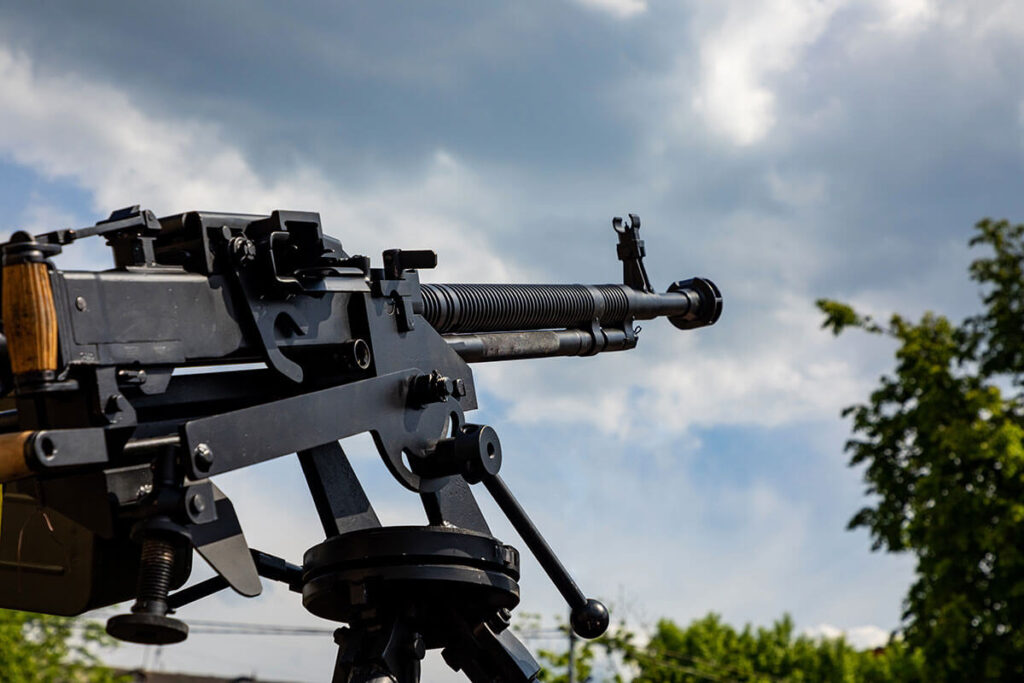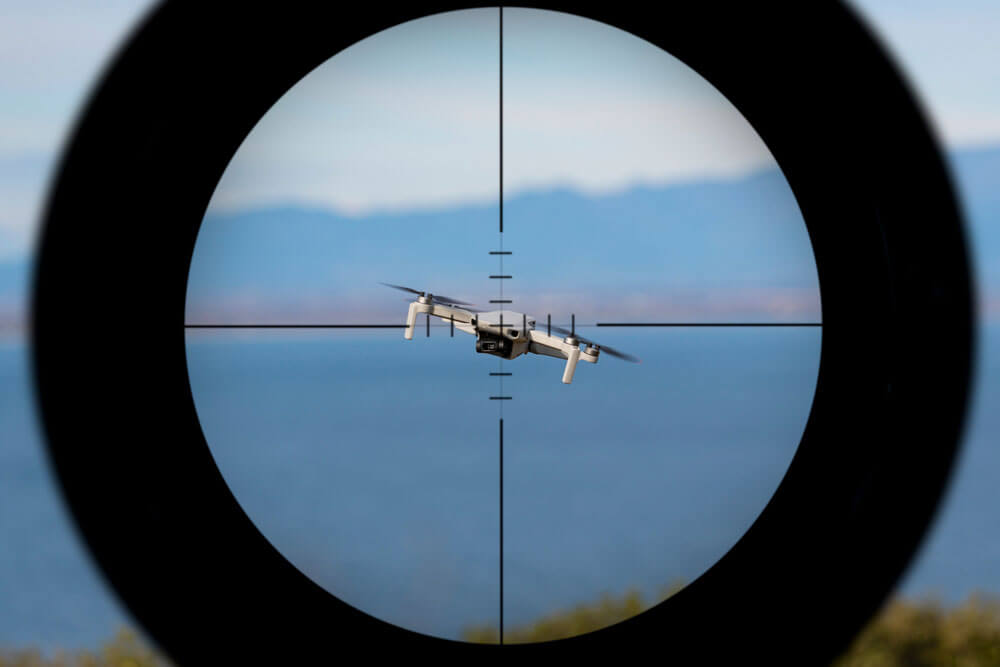As mysterious drone sightings continue to frustrate residents and authorities in New Jersey, the question on everyone’s mind is: who has the power to stop these aerial intruders? These recent events, and others (including drone swarms near a major Air Force base), have sparked intense debate about counter-unmanned aircraft system (CUAS) capabilities in the United States. This article delves into the complex world of drone mitigation, exploring who can—and cannot—legally take action against unauthorized drones.
The Drone Conundrum: More Than Meets the Eye
When considering how to handle drones, the most fundamental principle to remember is this: drones are not just toys or gadgets. The U.S. Congress, along with 191 other member states of the International Civil Aviation Organization (ICAO), the aviation arm of the United Nations, has classified drones (or uncrewed aircraft systems) as aircraft.
The Implications of Drones As Aircraft
This designation carries significant implications for how they can be handled when causing disruptions. Interfering with a drone’s operation, damaging it or destroying it —whether by disrupting its radio transmission, altering its flight path, shooting it down—equates to hijacking and falls under the aircraft sabotage act.
Drone Data Is Also Protected
Moreover, current technologies exist in the space today that make it possible to read information within the data stored in a drone that is considered private to the operator/owner that amounts to wiretapping. This is also illegal in the U.S., without express statutory authority or probable cause and a warrant.
A Labyrinth of Laws to Navigate
The list of laws that could CUAS technology could trigger is long and includes: 49 USC 46502 (aircraft piracy); 18 USC 32 (destruction of aircraft); 18 USC 1030 (computer fraud and abuse); 18 USC 1367 (interference with the operation of a satellite) and chapters 119 (interception of communications) and 206 (pen register and trap and trace devices).
In 2020, several key federal agencies, including the Federal Aviation Administration (FAA), Department of Justice (DOJ), Federal Communications Commission (FCC) and Department of Homeland Security (DHS) released inter-agency guidance to help clarify relevant laws, regulations, and factors affecting the use of counter-UAS technologies by public and private organizations. This advisory can still help interested parties ensure compliance with federal statutes.
The Authorized Few
Only a select group of federal agencies actually have the legal authority to use CUAS technologies. Even within these agencies, only some of their departments or sub-organizations have legal authority to employ CUAS technology.
The Department of Energy (DOE)
Considering the sensitivity of nuclear sites and some other assets of the DOE, this agency is authorized to protect nuclear facilities and assets from uncrewed aircraft, per 50 USC 2661, Protection of certain nuclear facilities and assets from unmanned aircraft. This statute authorizes a small number of officials at DOE to use CUAS to detect, identify, monitor and track a drone; warn the operator of the drone; disrupt control of the drone; seize or exercise control of the drone; confiscate it; and use reasonable force to disable, damage or destroy the drone without prior consent.
The DOJ and DHS
Both of these agencies have investigative and law enforcement missions and are generally empowered to mitigate credible threats posed by drones to covered facilities or assets under 6 USC 123n, Protection of certain facilities and assets from unmanned aircraft.
While the permitted actions that federal law enforcement personnel may take are similar in nature to those listed above in DOE’s authorities, this statute specifies that, “the Secretary [of DHS] and the Attorney General may… take, and may authorize personnel with assigned duties that include the security or protection of people, facilities, or assets, to take such actions … that are necessary to mitigate a credible threat (as defined by the Secretary or the Attorney General, in consultation with the Secretary of Transportation) that an unmanned aircraft system or unmanned aircraft poses to the safety or security of a covered facility or asset.”
The statute goes on to describe with great specificity the coordination with the Administrator of the FAA, the Secretary of Transportation, the congressional committees and other reporting requirements that are necessary to exercise this authority.
Interestingly, not every organization within DOJ or DHS can deploy CUAS. For example, within the DOJ, the Federal Bureau of Investigations (FBI) has specific CUAS authority. For DHS, the Transportation Security Administration (TSA), which falls under DHS and is charged with protecting our airports, does lack CUAS authority, but the U.S. Coast Guard has it.
The Department of Defense (DoD)
DoD’s authority rests in 10 USC 130i, Protection of certain facilities and assets from unmanned aircraft. This statute was the first Congressional CUAS authority. Like the statute that applies to DOJ and DHS, it also requires coordination with the Secretary of Transportation and comes with extensive reporting requirements. The DoD can protect certain of its own covered assets. This does not extend into the surrounding civilian communities. The implementing policy for this authority remains classified.

Whose Hands are Tied?
Surprisingly, several key government players lack the authority to engage in CUAS activities. High among these include the following.
The FAA
Despite overseeing airspace, the FAA can only test CUAS technologies in a limited manner, but not deploy them operationally. The only legal authority that the FAA has in this space is limited to testing CUAS at airports and other locations to determine what impacts those technologies have on the lawful operation of other aircraft and aviation related equipment in the national airspace system (NAS). This authority requires extensive coordination and approvals with the FCC and the National Telecommunications and Information Administration (NTIA) to prevent inadvertent interference with other transmissions (e.g., phones, banking transactions, medical devices and other internet of things or IoT devices).
State, Local, Tribal, and Territorial (SLTT) Law Enforcement
First-responders, the experts who by definition will be the first on scene during an incident, attack or crisis, currently lack the authority to disrupt or shoot down drones. Some reports of police take-downs of drones have actually been forwarded to the DOJ for investigation and prosecution.
With regard to private actors, these folks also lack legal authority to mitigate drones:
Critical Infrastructure Owners & Operators
The DHS has designed 16 critical infrastructure sectors. Within these, private entities own the majority of U.S. critical infrastructure assets. Those private owners and operators cannot protect those assets from rogue drones.
Private Citizens
Regardless of how annoying a drone might be, individuals have no legal right to take action against them, even over their own property. While this should be obvious, it is super important to note. Citizens can call their local law enforcement for guidance and support. Using a drone remote identification (ID) app can help to provide relevant information, including a drone’s remote ID number, to law enforcement.
An Ideal Future
The use of drones in our society continues to scale. The majority of people that operate drones do so lawfully and ethically. Most conduct commercial operations for the betterment of society or fly drones for their recreational benefits. Only a small few require intervention.
Handling The Clueless, Careless and Criminal
Careless operators, those that are not paying attention to no drone zones or are operating in an unsafe manner, simply need education and reminders. Clueless operators, those that simply are uneducated and think that drones are toys and not bound to the legal framework that traditional aircraft, also need education and enlightenment. Criminal and nefarious operators need intervention.
The Cure Must Not Be Worse Than the Disease
Such intervention, through CUAS technology, requires a delicate balance. The cure cannot be worse than the disease. Any action taken against a drone must not cause more harm than inaction would. A careful approach balancing security, safety and individual rights will be crucial.
A Reasonable Path Forward
For the industry to scale, it needs a path forward for expanded authorities. That path must be responsible and ensure that those entrusted with CUAS do so in a precoordinated, lawful and safe manner, with proper training and operating procedures that protect the rights of anyone impacted by the intervention.
While the mysterious drones in New Jersey continue to captivate public attention, it’s clear that the solution isn’t as simple as “just shooting them down.” By understanding the current landscape of CUAS authorities – and working together to improve it – we can move towards a future where drones can be effectively managed without compromising the benefits they bring to society.
Future improvements for CUAS should include:
- Expanded Authorities – legal authorities should be expanded to additional federal agencies, SLTT agencies and critical infrastructure owners and operators, in a controlled manner
- Proper Training – with CUAS authority comes the responsibility to ensure proper training and consistent operating procedures
- Rights Protections – Any intervention must also protect the rights of those impacted by it
By: Abby Smith

